Humidity is recommended to improve the CPAP therapy, avoid nasal congestion, and prevent dry mouth. Plus, it allows your nasal passage to cope with more airflow, providing additional comfort. A few patients, however, complain about CPAP air getting uncomfortably hot.
The CPAP air may get too hot due to a tight mask, incorrect humidity settings, bulky CPAP mask, or scorching summer heat.
While warm and humid air is a plus, unbearably hot air can make therapy challenging. Therefore, it is crucial to bring the temperature down to optimal levels. This guide discusses common reasons your CPAP air may be hot and suitable fixes.
Reasons Why Your CPAP Air Is Hot
Because CPAP therapy is intended to help you sleep better, the machine emitting hot air would negatively affect the treatment, discouraging you from continuing it. So, even if you have reduced events per hour, the hot CPAP air will wake you up frequently.
Here are a few reasons your CPAP air is unbearably hot and what you can do about it.
Mask Is Too Tight
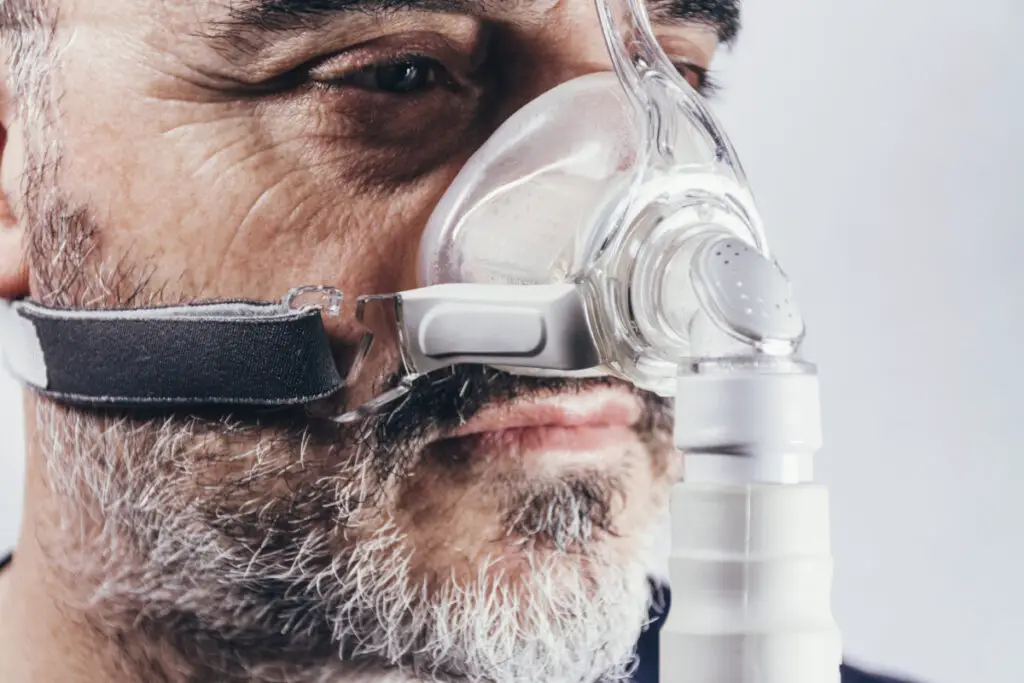
An old mask generally has a loose and ineffective seal. Because this happens gradually, many patients do not notice it. As such, they might tighten their mask to make a better seal.
This leads to over-tightening the mask. Not only does a tight mask cause marks and pain, but it also makes the CPAP air feel hot.
When firmly pressed against your face, the mask fails to regulate the temperature. Therefore, you may begin to sweat because your skin wants to provide relief from the tight mask.
What to Do
Tightening the mask isn’t a solution to creating a better seal. You must replace your supplies if they are worn out. Plus, if your CPAP supplies are insured, you’d have to pay almost nothing for replacements.
Once you’ve got a new mask with a better seal, it will likely make the air less hot.
You’re Using a Heated Humidifier
A CPAP humidifier releases moisture from a tank filled with distilled water. The warm air travels from the machine to your airway, increasing the therapy’s comfort. The Sleep Foundation highlights two primary humidifier types: external and built-in.
Plus, you’ll also find various humidification styles. For instance, Passover humidification is when the air passes over water at room temperature and travels to your airway. Another popular humidification technique is a heated humidifier.
It passes the air through a heated water tank. Because heated humidifiers perform better at warming the air, the doctor may recommend them for CPAP therapy.
Although a heated humidifier warms the water at a specified limit, you may find it uncomfortably hot if you aren’t used to hot air during the therapy.
What to Do
If you believe a heated humidifier makes the air hotter than you want, you can switch to another humidification style – think Passover humidification.
However, you must never make the shift without informing your CPAP therapist. Ideally, consult them for a suitable humidification style based on your unique sleep apnea symptoms.
Humidifier Settings Are Too High
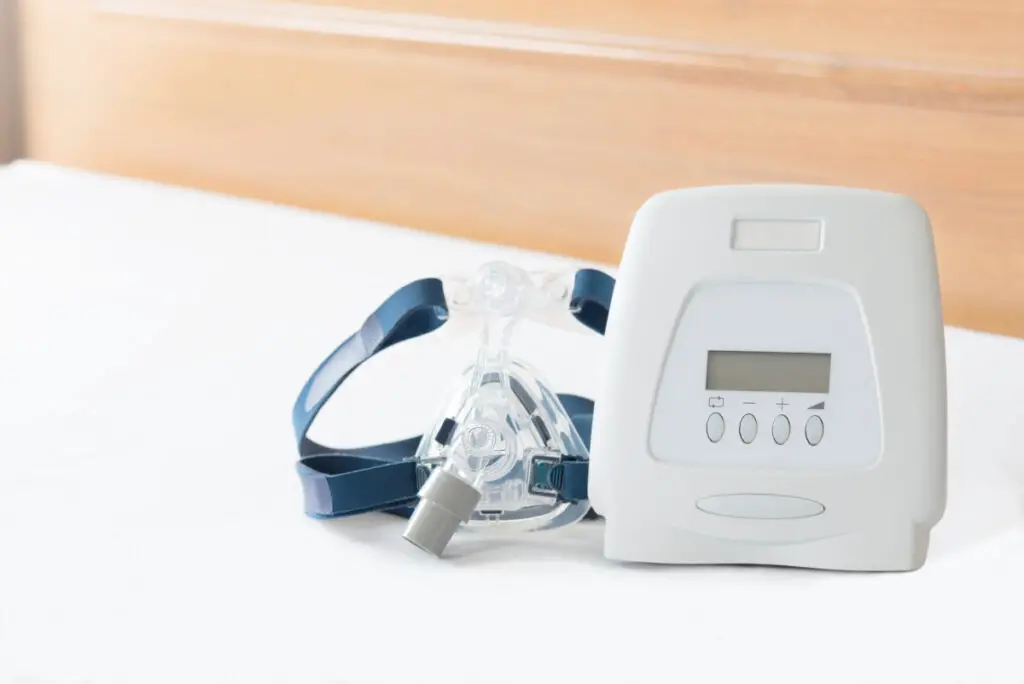
Although most models today are equipped with auto settings, a few may require you to set them manually. The humidifiers with auto features adjust the humidifier settings on their own. When the sensor detects the water reaches a specific temperature, it turns off automatically. Other humidifier types require you to set the temperature. If you own one and have set the temperature high, it may be warming the air beyond normal levels.
What to Do
Bring down the humidifier settings to normal levels. You can skim through the humidifier user manual to know the right settings. Alternatively, ask your CPAP therapist to adjust the settings for you. The right humidifier settings will provide a suitable air temperature.
You Need to Clean Your Mask
Over time, the masks accumulate bacteria and dirt. Not only does it lose the seal quicker, it also causes mask over-tightening. As such, you feel hot air passing through your nostrils. A dirt-laden mask can also irritate your skin and heat up quickly.
So, the air isn’t to blame at this point, but your mask.
What to Do
Clean your mask with mild soap and lukewarm water once a week. This will remove bacteria build-up, making your mask cleaner. As such, the air passing through it will not feel excessively hot.
Plus, ensure to replace your mask every 3 months. A worn-out mask might also make the air hotter.
The CPAP Mask Is Bulky
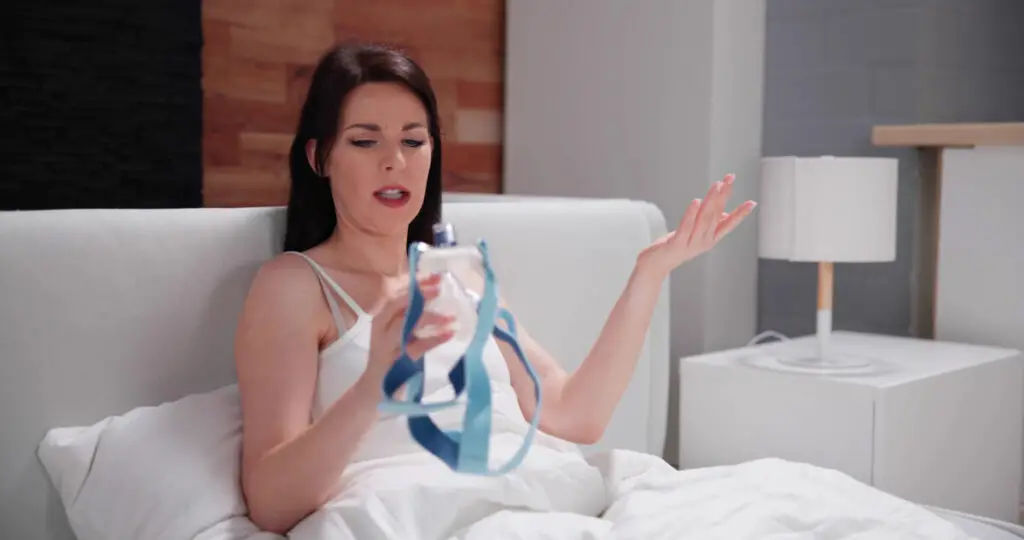
A few CPAP masks and headgear do not fit your face properly. As a result, it causes unwanted friction. Some, on the other hand, are too heavy against your face. As such, you may sense the air getting too hot.
What to Do
A bulky CPAP mask will make the air feel hotter than it actually is. So, consider switching to a lighter mask with minimal headgear. You can also wear a half-face mask to reduce the air warmth. For instance, a few masks only feature a nasal cradle that fits perfectly against your nose, giving an excellent seal.
The Surrounding Air Is Hot
While you might assume your CPAP air is uncomfortably hot, it might just be the surrounding air. This is common for people living in warmer climates. The scorching heat of the summer months can make your CPAP therapy an unpleasant experience. So, the CPAP humidifier might be doing its job perfectly, and you only need to change your surrounding atmosphere.
What to Do
WebMD recommends keeping the doors and windows open during CPAP therapy. Make sure you open your windows and doors in the evening and at night. This will help you cool down the room temperature.
Another hack to reduce the surrounding hot air is to turn on air conditioning. The units offer an excellent way to cool the room air, making CPAP therapy comfortable. However, not everyone can afford to pay the sky-high energy bills of AC units.
So, alternatively, you can install whole house fans as they significantly reduce indoor temperature. Make sure you open your windows and doors to lower the indoor temperature and maximize the functionality of whole house fans.
You Need to Add More Cushioning
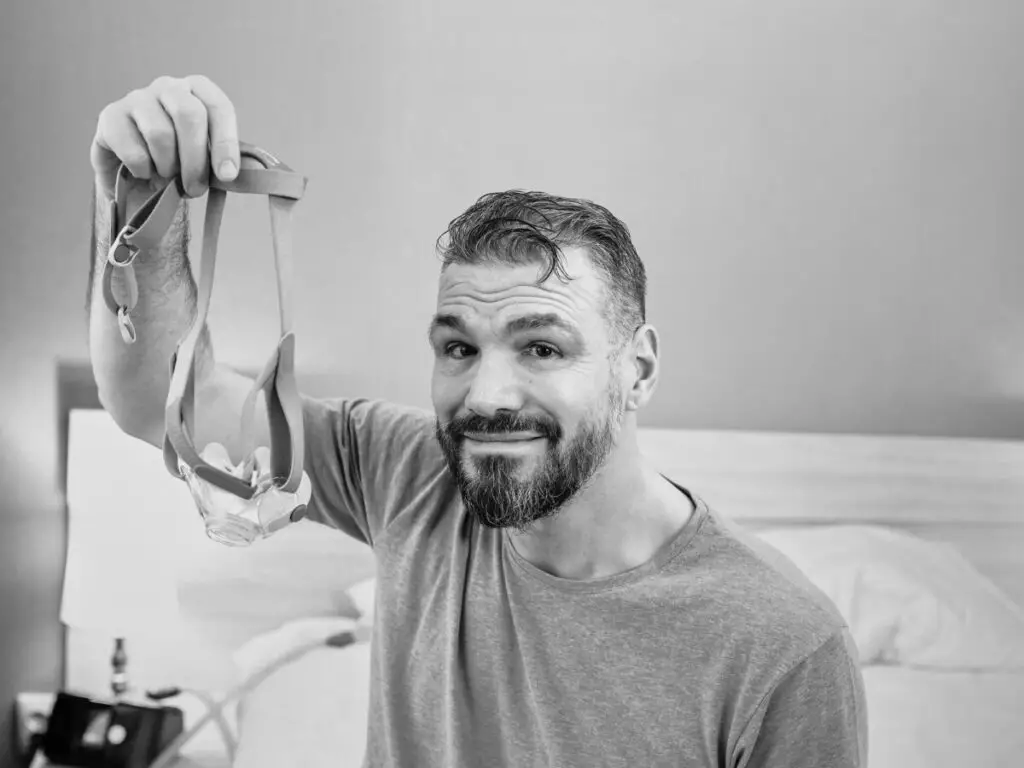
If you do not use a mask liner, it can make the CPAP air feel hot, causing you to sweat more. You need a soft cotton barrier to reduce pressure on your face and absorb the sweat.
Hence, compromised or no cushioning can make the humidifier air feel hotter.
What to Do
Consider using a mask liner to reduce pressure and sweating. Adding more cushioning will reduce the CPAP heat and let you sleep comfortably at night. Not only does it keep your face from sweat, but it also wicks away moisture. You can pick from two popular mask liner types:
- Reusable CPAP mask liners. They are made with breathable material that fits perfectly over your mask cushion. You can wash them in the machine and use them for up to 6 months.
- Disposable CPAP mask liners. They are made of thin, soft fabric or padded paper. Make sure you toss them away after using them and opt for a new mask liner the next time.
The Sheets Are the Culprit
The hot bedding can make you feel the CPAP air is too hot. Not only does it make the therapy warmer, but it also compromises your sleep.
What to Do
Try sleeping with no sheets. Plus, consider turning the pillow over and using the cooler side of the mask when it gets too hot.
You can also invest in temperature control cooling sheets. The texture, fabric, and thread count are the primary components of the sheet that regulate its temperatures. They help absorb excess body heat and moisture. So, when your body temperature rises from the humidifier air, a cooling sheet can help regulate its temperature.
Faulty Humidifier
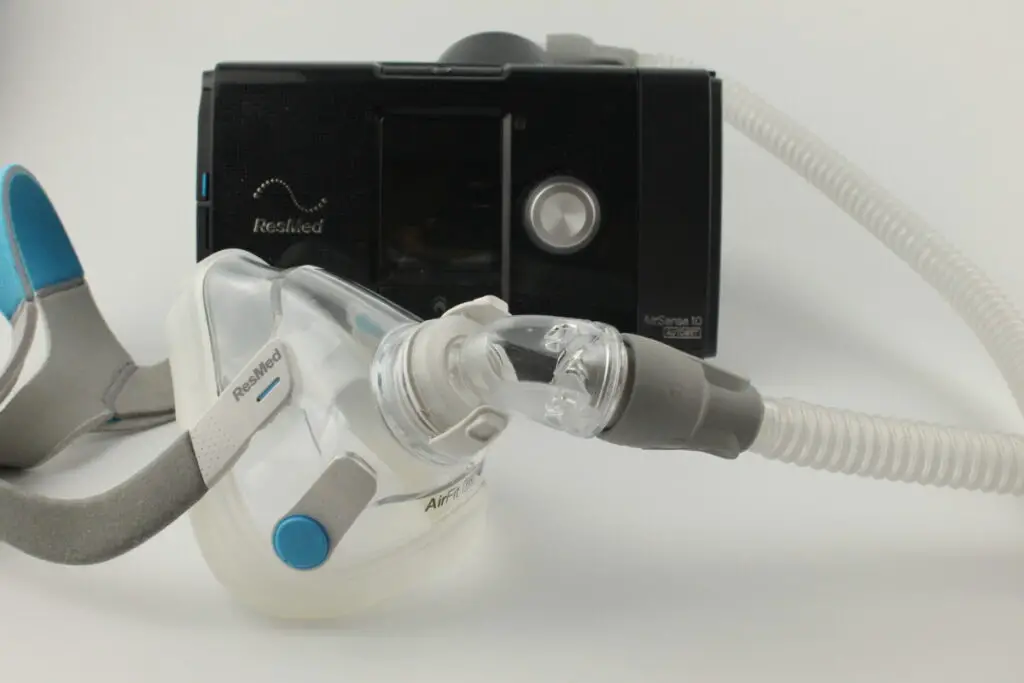
Your CPAP air can also be too hot due to a malfunctioning humidifier. The humidifiers are meant to warm the air passing through your upper airway. However, if they’re warming the air beyond the normal levels, they aren’t doing the job right.
You can always test this by changing the humidifier settings. A faulty humidifier is to blame if nothing seems to reduce the air temperature.
What to Do
The only solution to a faulty humidifier is to replace it. However, before you buy a new humidifier, consider checking the hot plate of the device. Oftentimes, the element has a technical issue, and it overworks, making the water hot.
You can get the hot plate replacement from the manufacturer. If, however, the device is damaged, you must replace it.
You’re Using a Heated Tubing
A heated tubing has coils of copper wire running across the hose’s length. The extra components do not make them heavier than standard tubings. Heated tubings are designed to keep the humidity and temperature levels stable. However, they might make the temperature hot when not working properly.
What to Do
Although heated tubings regulate the temperature and humidity, they might compromise functionality for some reason, making the air hotter.
Consider switching to standard tubing, and see if it resolves the hot air issue. However, because doctors often recommend using heated tubing, make sure you consult your health practitioner before using standard tubing.
FAQs
What Should My CPAP Tube Temp Be?
An ideal CPAP tube temperature is between 60-80F. If you own a model with a Climate Control system, it’ll have its default settings.
Many CPAP models today have default CPAP tube settings. So, you won’t need to adjust them. However, if the auto settings aren’t comfortable, you can always change them per your preferences.
What Happens If Your CPAP Humidity Is Too High?
A high CPAP humidity can cause condensation, dripping back the water to our masks. Plus, it also makes the air uncomfortably hot.
High humidity settings can lead to rain out, which explains the formation of wet mist around the mask. Besides, the air gets incredibly hot, making the therapy uncomfortable. Make sure you turn the settings a notch or two down. Besides, use a tubing cover to minimize condensation and insulate the hose.
Is It OK to Run CPAP Without Water?
While the device functions normally without water, it is not OK to use one without water.
A dry mouth is one of CPAP therapy’s most common and unpleasant side effects. It discourages many patients from continuing their therapy. Therefore, doctors recommend using a humidifier to prevent dry mouth and throat. Not only does humidification improves your CPAP therapy, but it also helps you catch a good night’s sleep.
Therefore, it’s best to follow the doctor’s advice and use water when running a CPAP machine.
What Humidity Level Should I Set My CPAP At?
Most CPAP manufacturers recommend setting the humidity levels at 3.
However, note that not every patient has similar sleep apnea symptoms. For instance, those who sleep with their mouths open may experience dry mouths and chapped lips even when using a humidifier. As such, the doctors may suggest they raise their devices’ humidity levels.
You must consult your doctor to know the ideal humidity levels.
How Often Should I Clean My CPAP Machine?
You must clean your CPAP machine regularly. However, the cleaning steps you’ll follow daily differ from weekly and monthly cleaning.
Here’s how you can maintain your device and keep it in shape as a regular CPAP user.
- Daily cleaning. You must drain the excess water regularly to keep the humidifier’s water chamber from bacteria buildup. Make sure you wipe it with a clean towel before re-filling it.
- Weekly. Soak your CPAP mask, tubing, and reusable filter in warm soapy water. Then, air dry it before using it again.
- Monthly. Wipe the entire machine with water every month. Pick up the device and clean its bottom, too. Lastly, replace your filter and turn on the device after drying.
It is best to replace the CPAP tubes every 3 months, and the CPAP mask every 3-6 months. Also, do not forget to take advantage of the insurance plan for regular replacements.
